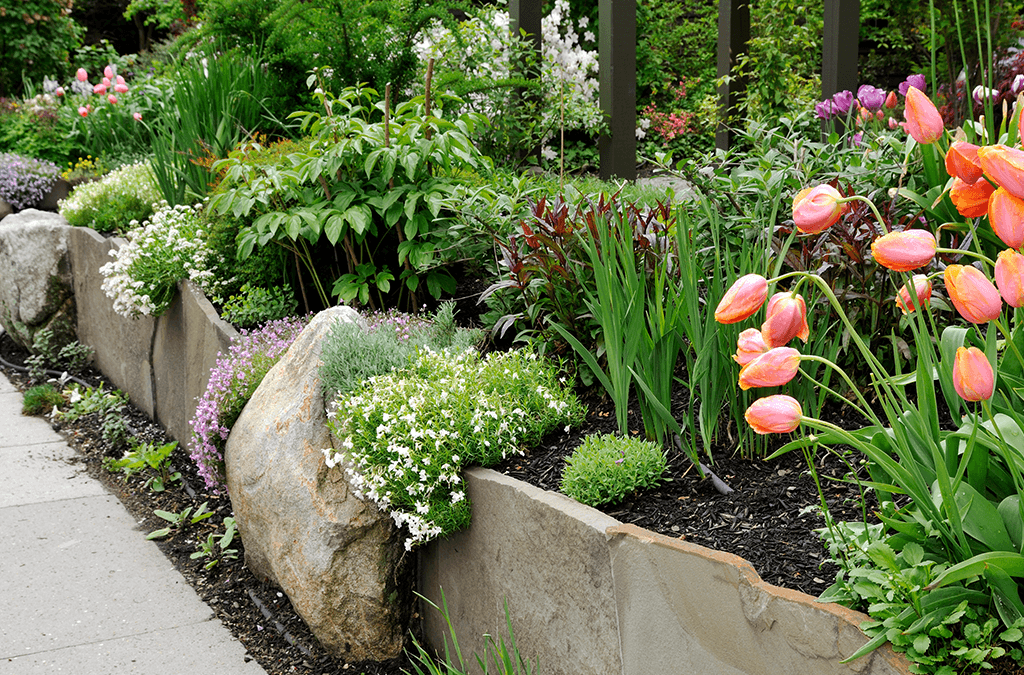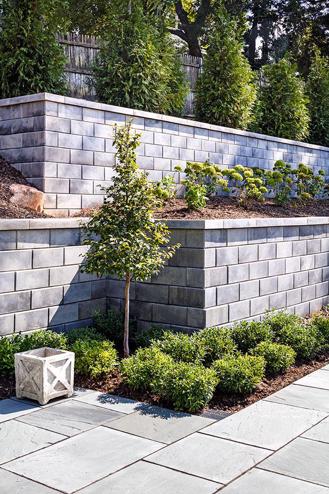Rumored Buzz on Retaining Wall And Garden Wall Construction
Table of ContentsThe Best Guide To Retaining Wall And Garden Wall ConstructionIndicators on Retaining Wall And Garden Wall Construction You Should KnowExcitement About Retaining Wall And Garden Wall ConstructionUnknown Facts About Retaining Wall And Garden Wall ConstructionGet This Report on Retaining Wall And Garden Wall Construction
If this slope is not controlled, the wall will certainly relocate or fail. Rainwater that runs off the top of a keeping wall surface can harm the soil as well as plants on either side, deteriorating them away. Drainage systems divert this water from prone locations, lowering the influence to the structure as well as its surroundings.
Fill it with smashed rock or crushed rock. All preserving wall surfaces need to consist of drain stone even if a draining pipeline is not called for. Location filter material over the drainage stone and also listed below the topsoil. That stops great material as well as organic matter from clogging up the drainage rock. If your maintaining wall surface needs a drainage pipeline, make certain the pipe has slots on all sides, not simply one.
The smart Trick of Retaining Wall And Garden Wall Construction That Nobody is Discussing
Clay or other bad draining pipes soils lag the wall surface. There are buried water resources within 50 feet of the retaining wall place 5. There are outlet alternatives for your drain pipeline. Whichever one you choose, put an electrical outlet at the very least every 30 to 50 feet along the wall surface. Poorly drain will certainly reduce the life of your retaining wall.

Fabricated wall surface used for supporting dirt in between 2 different elevations Maintaining wall surfaces are relatively rigid wall surfaces used for supporting soil laterally so that it can be kept at various degrees on both sides. Retaining walls are structures created to limit dirt to an incline that it would certainly not normally keep to (usually a high, near-vertical or upright incline).
Things about Retaining Wall And Garden Wall Construction
A keeping wall surface that maintains soil on the backside and also water on the frontside is called a seawall or a bulkhead. A keeping wall is developed to keep in area a mass of planet or the like, such as the edge of a terrace or excavation. The framework is created to withstand the side pressure of soil when there is a wanted modification in ground elevation that exceeds the angle of repose of the dirt.
These are cantilevered from a footing and surge above the quality on one side to maintain a greater level quality on the opposite side. The wall surfaces need to withstand the side stress generated by loosened dirts or, in many cases, water stress. Every maintaining wall sustains a "wedge" of soil. The wedge is defined as the dirt which extends past the failure airplane of the dirt type present at the wall surface site, and also can be calculated when the soil rubbing angle is understood. Retaining Wall And Garden Wall Construction.

This reduction reduces the pressure on the retaining wall. The most essential consideration in proper design as well as setup of keeping wall surfaces is web link to recognize as well as neutralize the propensity of the preserved product to relocate downslope because of gravity. This creates lateral planet stress behind the wall which depends on the angle of inner rubbing (phi) as well as the cohesive toughness (c) of the maintained product, along with the instructions and size of activity the preserving structure goes through.
Excitement About Retaining Wall And Garden Wall Construction
Various sorts of preserving walls Building and construction types of gravity preserving walls Gravity wall surfaces rely on their mass (rock, concrete or other heavy material) to withstand stress from behind and also might have a 'batter' trouble to enhance security by leaning back toward the retained soil. For short landscaping walls, they are typically made from mortarless rock or segmental concrete systems (masonry systems).
These walls cantilever tons (like a beam of light) Resources to a discover this big, structural ground, converting horizontal pressures from behind the wall to vertical stress on the ground below. In some cases cantilevered walls are buttressed on the front, or include a counterfort on the back, to improve their strength resisting high loads. Buttresses are short wing walls at best angles to the major pattern of the wall. Diaphragm walls are pricey wall surfaces, but they save time and also area, and therefore are utilized in urban constructions. Sheet stack keeping wall surfaces are normally used in soft dirt and limited areas.

How Retaining Wall And Garden Wall Construction can Save You Time, Stress, and Money.
A secured retaining wall can be created in any one of the previously mentioned styles yet also includes added stamina using cable televisions or various other keeps anchored in the rock or soil behind it. Generally driven into the material with boring, anchors are after that increased at the end of the cable, either by mechanical ways or often by injecting pressurized concrete, which broadens to develop a light bulb in the soil.